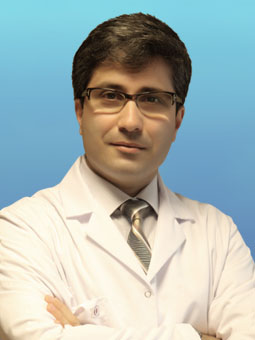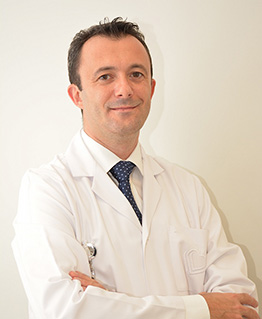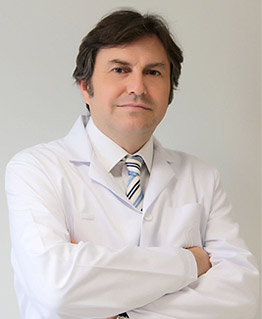
UROLOGY
Services in our Urology Clinic:
- Greenlight laser, closed (TUR) and open prostate surgeries
- Medical and surgical treatment of stress incontinence
- Kidney and urinary tract stones
- Infertility treatment (male infertility)
- Sexual dysfunctions
- Surgical interventions (undescended testicle, varicocele, hypospadias, etc.)
Be wary of uriner problems
In our clinic; male and female urinary tracts and organs and male reproductive organs and deal with the diseases of these systems. Surgical treatment of the adrenal glands also takes place in the field of urology. Urology deals with both adult and child patients. Among the diseases encountered in urology practice are: urinary tract obstruction, prostate enlargement, impotence, infertility, urinary incontinence, kidney and urinary tract stones; kidney, bladder, prostate and (testis) egg cancers play an important role. Other common diseases treated by urologists are urinary tract infections, sexually transmitted diseases, and injuries to the urological organs. In addition, urology is also interested in some of the innate diseases of boys. These include the undescended testicles, inguinal hernia, hydrocele, and urinary incontinence (hypospadias and epispadias). Wetting the bed at night, urine going back to kidney from bladder, all diseases of circumcision skin and circumcision operation are on the field of urology. In addition to open surgical operations, urology science also performs closed surgeries based on modern technological methods such as endoscopy and laparoscopy.
URINARY SYSTEM DISEASES
Be careful of uriner problems ... do not let it hunt down your life ...
Urinary system diseases lead to major health problems. Therefore, early diagnosis and correct treatment of these diseases are of great importance. Get to know some of the urinary tract diseases better so that your health and future plans are not adversely affected.
-
Prostate
A prostate is a gland that is found in males, beneath the urine sac and surrounds it. Prostate enlargement is one of the most common diseases of the prostate gland. It is one of the most recent health problems of men over 50 years of age. The disease begins to show with urine complaints. Frequent complaints include frequent urination, frequent urination at night, incontinence and dripping urination, and urinary incontinence. If left untreated, it can lead to 'obstructive uropathy' (urinary tract obstruction) and kidney failure over time. It can also be malignant prostate enlargements (prostate cancers). For such early detection of growths, men over 40 years of age should be examined by the urologist once in a while and have to undergo PSA screening.
There is no uniform treatment for benign prostatic hyperplasia, it can be treated with medication or surgical intervention. Today, greenlight laser and closed surgery (TUR) are widely preferred for surgical treatment of prostate enlargements. However, all methods should be mentioned to the patient and should be chosen in the form of treatment considering the wishes of the patient.
-
Kidney and Urinary Tract Stones
Urinary system stone disease is a pathological condition affecting the urinary system and this disease has been known since 4800 BC. Kidney stones occur when the substances dissolved in urine collapse under normal conditions to form hard deposit particles. The reason for the formation of the stone is the increase in urine density or the excessive amount of dissolved substances in urine.
Under the light of the work done so far, the chemical and physical structure of the stone has been provided with sufficient information about the composition, but despite all the progress in technology, the reason is still not fully understood. Stone disease is not the result of a single cause, but a multitude of complex and interrelated factors that together result in events that occur together. Kidney stones are classified according to their numbers, places and chemical structures.
Kidney stones are seen to be at least three times more common in males than females. The risk of lifetime stone formation in adult males is around 20 percent. This rate is between 5 and 10 percent for females. The recurrence rate in stone patients has been reported to be higher than 50 percent over a period of 5 years from the first stone formation. Urinary tract disease is common in countries like Scandinavia, Mediterranean countries, Pakistan and Malaysia. Nutrition, climate and genetic factors also play a role in stone formation. Although it is difficult to establish a direct relationship between climate and stone formation, it is detected more in places with high temperatures and in summer.
Pain, bloody urination, fever, nausea and vomiting are among the symptoms of stone disease. Complications related to stone diseases, ie stone-related additional disorders, are common. The kidney pool and the expansion of the cups (hydronephrosis) and kidney inflammation (pyelonephritis) are the main ones.
In recent years, great progress has been made in the medical treatment of urinary tract stone disease.
-
Varicocele
Varicocele can be defined as the enlargement of the vein web around the ovaries and the retraction of blood. The incidence in males is reported to be 15 percent. Among infertile men, this rate is around 40 percent. In most of the cases, it is located in the left side only.
Varicocele is usually symptomatic on the testicles and in the pubic area after the movement. However, in some patients there may be no findings. Patients with Varicocele at advanced age refer to the doctor for the enlargement of the veins around the testicle.
Varicocelin is thought to cause deteriorate sperm production and sperm quality, thus leading to infertility. In addition, varicocele can cause atrophy and diminution in size of the testicles. It is known that sperm counts in these patients are normally low in sperm analysis and abnormal sperm motility and morphology may develop in 90%. Varicocele has been reported to cause impaired sperm function in 75 percent of patients. The improvement in sperm parameters following varicocele treatment appears to be around 60-70 percent on average.
-
Undescended Testis
Undescended testis (cryptorchidism) is the cessation of the testicle anywhere on the normal descent path between the kidney and scrotal area. Undescended testes to scrotum can stay in the groin or abdominal region. In infants 1 year of age, undescended testis is found in 3-4 per thousand of them. This rate is around 2 per thousand in adults.
Most significant finding is missing one or two testicles. In these patients, the risk of cancer is more than 20 to 40 percent higher than normal. Testicular tumors develop in 5 to 10 percent of patients with undescended testicles before age 45.
The aim of the treatment is to place the testicles. There are two ways of achieving this goal: hormonal therapy and surgical treatment. Treatment should be done as early as possible. Preferably, it should be performed around 1 years of age.
-
Hypospadias
Hypospadias is a birth defect (congenital condition) in which the opening of the urethra is on the underside of the penis instead of at the tip.
The incidence of hypospadias is reported to be one in three thousand live births or one in every 300 boys. The incidence of hypospadias in brothers of children with hypospadias has been reported as 14%. The cause of hypospadias is unknown. The severeness of the disease is related to where the opening is. Depending on how far the urine output hole is far away from where it is supposed to be, the abnormality is that severe. Only treatment method is surgery.










